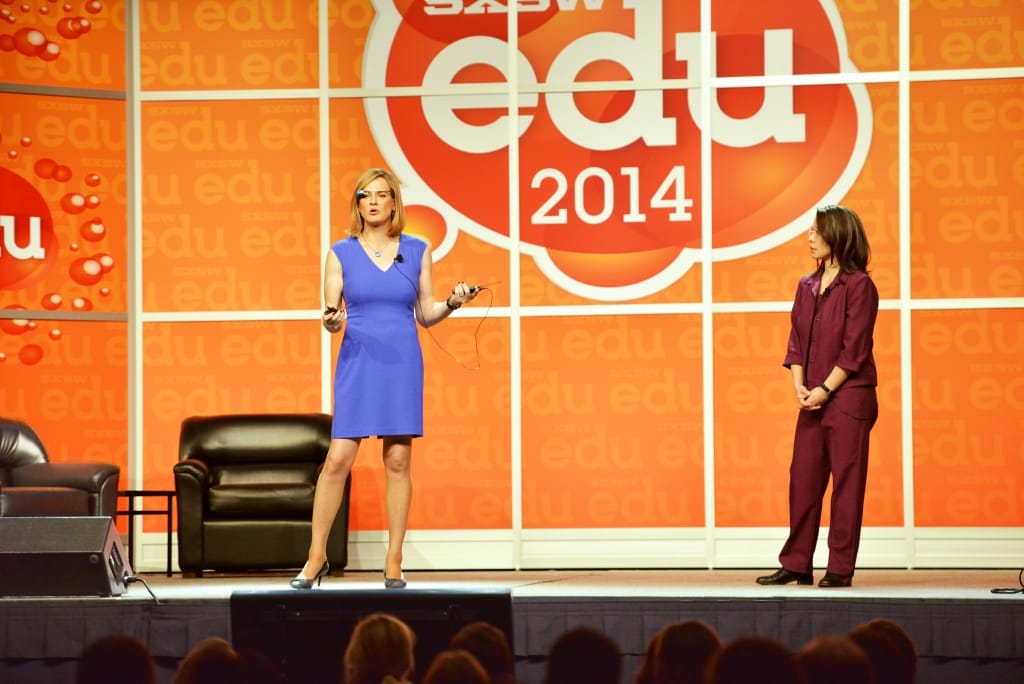Parallels in Learning

Math and Writing, European and East Asian—are we truly so different in our education anxieties?
You want to support my work but don't need a keynote from a mad scientist? Please become a paid subscriber to this newsletter and recommend to friends!
Mad Science Solves...
From the (yes, really) upcoming How to Robot-Proof Yourself:
SXSW started as a music festival. However, when you collect many wealthy, creative types in one space, an interesting thing emerges: marketing. The festival metastasized over the years from launching music careers to becoming a viral launchpad for films and tech startups, famously introducing the wonders of Twitter to our lives. By the time I attended my first festival in 2012, SXSW combined the most obscene displays of unabashed branding (“Free cappuccino if you squeeze the Charmin on camera at the Charmin pavilion!”) with a militant insistence that no self-promotion be allowed on stage.
For me, this dissonance reached its crazed zenith with the keynote invitation to my wife and I. They wanted us to discuss what was wrong with EdTech...but without talking about our own research. As you might imagine, it’s rather challenging to talk about your research without talking about your research. (Imagine trying to give a 75-minute keynote to ten thousand people while playing an extended game of Taboo about your findings. Additionally, our fellow keynoters were Jeffrey Tambor and Rod Paige. Jeffrey has had his own troubles of late, but after Rod gave his keynote, an audience member walked up to Norma and me and said, “The only thing I learned in the last hour is that if the two of you had been in charge of our education for the last four years, we would all be a lot better off today.” Flattering and brutal.) It makes me wonder if Jay-Z was instructed to only perform covers that year.
As it turns out, I am entirely capable of being a highly opinionated jackass on stage for 90 minutes, even without my research as a crutch. Undeterred, my wife and I accepted the offer of being married women on stage in the heart of Texas (although, as everyone knows, Austin is different). Norma and I walked on stage with two thirds of an idea and 30 unscripted minutes to fill. And so, about halfway through, I pitched a mad science experiment that had been tip-toeing in the back of my mind for some time: listen to children while they were learning, interacting, and creating, and then provide real-time insights on each child to their teachers and parents. I truly didn’t know if it could be done, and to many in the audience it may justifiably have sounded like Silicon Valley pseudo-science. (In fact, I know that it did because I wore a pair of Google Glass during the keynote. I saw real-time Tweets while I was on stage and looked like a complete fucking nerd.) Given my experience in EdTech, however, this was the kind of mad science project that I thought was worth attempting. It turns out that I wasn’t the only one.
After leaving the stage I found an email waiting for me, “I can do this, I want to do this, and I want to get started today.” A cultural anthropologist studying bilingual kindergartners in Texas had been in our audience. Her research relied on laborious by-hand analysis of hours of video footage from classrooms. A month of analysis by her lab turned an hour of video into insights that she could then offer back to the teachers of those classes. This professor didn’t hear us propose crystal balls and magic wands; she heard exactly what I had envisioned: a machine learning tool turning classroom experiences into targeted recommendations.
Over time that single message of encouragement grew into one of my most successful projects: Muse.
Support this work—book me!
https://www.socos.org/keynotes/
Weekly Indulgence

Here's my wife and I giving a joint Keynote at SxSWedu. I was wearing Google Glass on stage and reading live tweets as we presented—chaotic fun!
Stage & Screen
My Spring is quickly filling up (and even next Fall)!
- Apr 16, LA: Come see How to Robot-Proof Your Kids with the LA School Alliance.
- We're setting up more event as I write. Want to host: book me at a discount!
- May 8, Boston: chatting with BCG on lifting Collective Intelligence and The Neuroscience of Trust.
- May 8-10, Santa Clara: I return to Singularity University
- May 23, Seoul: keynoting the Asian Leadership Conference! (from last year)
- Mid-June, UK & EU: Buy tickets for the Future of Talent Summit and so much more!
- July, DC: Keynote at Jobs For the Future Horizons!
- Early Bird registration is open.
- Next Fall: Out in Tech! Singapore! Paris! and so much more!!!
If your company, university, or conference just happen to be in one of the above locations and want the "best keynote I've ever heard" (shockingly spoken by multiple audiences last year)?
<<Please support my work: book me for a keynote or briefing!>>
Research Roundup
Math vs Writing: Anxiety & Uncertainty
Two stresses have tormented students for ages: math anxiety and writing anxiety. Yet one has received mountains of research attention, while the other lurks in relative obscurity. A full accounting of human capacity requires understanding students' challenges in writing just as much as barriers to STEM. A new paper, focused only on math anxiety, explores a powerful intervention that holds promise for both challenges.
Math anxiety might be posed as "excessive levels of negative emotion, including intrusive and distracting thoughts" that students experience when confronting mathematics. The study tested two math anxiety interventions. The first focused on emotion regulation through cognitive reappraisal The second focused not on the anxiety itself but on remediating “study skills” to address anxiety-driven behaviors: avoidance, poor preparation, and inaccurate self-assessment. By encouraging homework practice, self-quizzing, and a general "face your fears" mentality around math tasks, the study skills intervention not only boosted performance much more than emotion regulation but it showed sustained benefits in the following quarter.
I had several reactions to the results. First, emotion regulation intervention in general puts the source of the problem on the students—identifying them as the source of the problem. The study skills intervention give tangible control back to the students. Further, the incremental successes afforded by increased study skills reduces anxiety, not by treating these feelings as irrational but by showing the students that they can do the work.
I would love to see this intervention explored in writing and reading comprehension. This would require reformulation tailored to the idiosyncrasies of writing, but the soul of the approach might produce similar large gains. In the long run, quality writing is at least as rich an expression of human capital development as STEM skills. It’s one with which even professional writers often struggle. We should take it more seriously.
We Are Not So Different in Our Difference
Sometimes papers leave me with more questions than insights.
EduYears is a “heritable trait often used as a proxy for cognitive ability”. Higher scores “is associated with various health and social outcomes”. Despite potential differences in the genetic and epigenetic makeup of East Asian and European populations, “EduYears showed a high genetic correlation”, suggesting “cross-trait genetic correlations” between them. So, on some level, we are not so different in our differences.
Why questions enter from the vagueness of EduYears. It’s regressed construct mapping educational attainment to genetics, but what are the actual underlying meta-learning factors at play: *g*? Working memory? resilience? conscientiousness? strength of purpose? perspective taking? role-modeling and subjective utility? What is truly being captured here?
Given answers to the above question, what is left for interventions given a low EduYears score? What is left given a high score? If we had a breakdown of the underlying factors rather than the composite trait, what is intervenable given a pattern of high and low scores, and how might that change with differing patterns?
Clearly genes play a huge role in how we are, but so do epigenetics and role modeling. How do these all interact? Is there a genetic/epigenetic profile for (positive) susceptibility to environmental influence, like adaptability or simply impressionability?
Read more at www.socos.org/parallels-in-learning/.
SciFi, Fantasy, & Me
I finished watching Bodies last week. It’s a murder mystery in which the same murder takes place across 4 different time periods in London: Victorian England, The Blitz, modern day, and post-semi-apocoliptic near future. It is the sort of weird, dark timey-wimey scifi mystery that has played well on Netflix of late with shows like Dark. I mostly enjoyed it, but without too much spoilering, the ending was a letdown. It was setting itself up to be so smart and I was expecting to be blown away, but the show opted for an easy out.
It’s a fine way to pass the time but missed an opportunity to be more.
| Follow more of my work at | |
|---|---|
| Socos Labs | The Human Trust |
| Dionysus Health | Optoceutics |
| RFK Human Rights | GenderCool |
| Crisis Venture Studios | Inclusion Impact Index |
| Neurotech Collider Hub at UC Berkeley |




